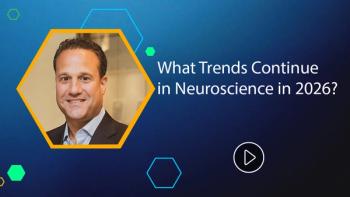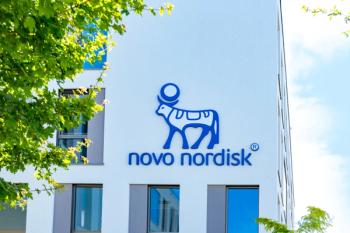
Q&A with Kelly Baker, CFO of Eversana
Baker spoke on topics ranging from pricing, access, the war for talent, and other key areas that are impacting pharma companies.
After a turbulent year, life sciences companies are changing the ways they spend and raise capital in the coming year. Kelly Baker, CFO of Eversana, spoke with Pharmaceutical Executive about some of the trends she sees coming ahead.
Pharm Exec: What are the primary issues Pharma companies are facing these days in relation to pricing, access, reimbursement, and adherence?
Kelly Baker: The major issue facing Pharma companies right now is balancing access, patient affordability, and ongoing innovation with increasing downward pressure on price including the inflation reduction act passed earlier this year. The U.S. government now has the power to negotiate the most expensive drugs purchased through Medicare–a significant shift for the U.S. healthcare system. At the core of this challenge is how pharmaceutical companies continue to provide innovative science while ensuring patients have access to the right drug, at the right time, and at an affordable out-of-pocket cost so they may initiate and maintain appropriate treatment for the best possible outcome. This is a multifaceted challenge that requires balancing the often-competing incentives among key stakeholders, payers, healthcare professionals (HCPs), and patients.
Eversana is positioned to support pharmaceutical and life science companies to balance the needs of key market access stakeholders through a holistic approach to developing and executing impactful market access strategies. We begin with the value story and illuminate the evidence beyond the clinical data needed for registration that will support clear differentiation from other treatment options for payers, HCPs and patients as well as optimal product pricing.
The second key component is understanding how the payers (Commercial and Government) will manage product utilization (e.g., formulary tier placement) and how it will be reimbursed–relative to other treatment options. We do this through claims data and analytics augmented with primary market research and one-on-one conversations through our established relationships within the payer community. We encourage our partners and clients to do this in advance of approval to help inform the value story as well as the pricing and contracting strategy.
The third component of market access strategy is patient affordability. We start by understanding the target patient population and their payer mix (e.g., what % of patients have Medicare, Medicaid, Commercial coverage). Through this lens, can help identify compliant strategies to support affordable out-of-pocket costs for patients (including co-pay cards for patients with commercial coverage and PAP programs for eligible uninsured/underinsured patients).
The last component is the integrated distribution, dispensing and patient support services strategy.With our 3PL, pharmacy, and patient services capabilities, we understand how to design and implement cost-efficient physical access to a product and the support patients might need beyond the treatment.While affordability is key for patients, there can be other barriers. For example, sometimes patients need referrals to local services like transportation or support groups.
Pharm Exec: How has the attitude of investors in the life sciences industry changed over the last year?
Baker: As a result of the global economic dynamics, investment in the life science industry has been tempered. The earlier a product resides in the drug development cycle, the higher the associated risk in terms of investment potential. Eversana is in a unique position to provide benefits to companies seeking some shelter from the existing financial conditions, as we ensure a company makes limited investment in commercial infrastructure, provide a stronger opportunity for success in market, and avoid risk if there are FDA delays.
Pharm Exec: What should life sciences companies be investing in for the coming year?
Baker: Life sciences companies should continue to invest in operating models that are based on a higher degree of commercial outsourcing. In addition, continued investment in oncology, digital therapeutics, and rare diseases therapies and strategies are critical to long-term success.
The current trend in the life science landscape is one of reimagination of existing structures across both clinical development and commercialization. This is related to antiquated models that were built to support large-scale products associated with macro health issues across cardiovascular, infectious disease, immunology, and endocrinology. The existing product landscape is one that centers on specialty products in oncology, central nervous system (CNS), and rare disease therapies. There are more than 100 oncology products in today’s pipeline and many are second, third, and fourth line therapies where the market opportunity is niche and very specific. Commercial approaches to achieve success within these markets is now surgical and precise in terms of strategy. Also, it has moved to specialized operating models as opposed to bloated infrastructures where armies of sales reps were mobilized to achieve success.
As a result of the above, the approach to product commercialization is following the same path as clinical outsourcing in the late 1990s where there will be a more outsourcing as it saves significant internal spend and avoids the risk associated with delayed FDA approvals.
Finally, there is a lot of work underway right now to transform the way patients, physicians and other stakeholders connect with a brand or product. Life sciences companies need to embrace this and continue to drive digital engagement. This can be expensive to do in-house, so having partners with the chops and experiences is key. We're building this capability through the combination of rich data, digital platforms like telehealth, and omnichannel marketing capabilities to help brands. It’s the future of connecting with patients.
Pharm Exec: Is the war for talent still ongoing, and how will it change in the coming year?
The talent war is still here, though we have seen some overall slowdowns due in large part to economic conditions. If you look across many sectors, including life sciences, workforce reductions have occurred over the past months with talented people now looking elsewhere.
This presents an opportunity for companies to find new homes for these talented people who could quickly bring big change to their organization. Companies that build a culture where employees feel connected to something bigger and can see the vision are the ones that will have the best chance at finding and retaining talent.
Pharm Exec: Is the rising trend of digital therapeutics and value-based contracts impacting the sorts of drugs life sciences companies are investing their time and energy in?
Baker: Digital therapeutics (DTx) continue to grow and are making the life sciences and pharmaceutical manufacturers, in many ways, rethink patient care. Drugs and DTx will work together to improve outcomes. There are two primary scenarios top-of-mind across the industry. In the stand-alone scenario, a digital therapeutic product is used independently of drugs. For example, MEDRhythm’s music therapy has the potential to help stroke patients walk normally. In the second scenario, a digital therapeutic is combined with a drug to treat the patient holistically, which creates many opportunities. For example, multiple sclerosis (MS) patients often have other symptoms such as anxiety and depression—yet most MS drugs don’t address them. So there is a potential for a partnership or a DTx as an opportunity to treat patients holistically—mind and body. Physical and mental health are connected.
Newsletter
Lead with insight with the Pharmaceutical Executive newsletter, featuring strategic analysis, leadership trends, and market intelligence for biopharma decision-makers.





